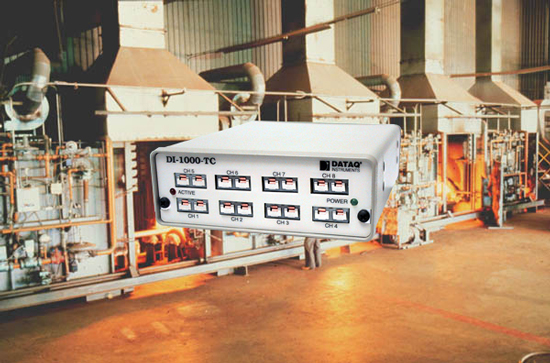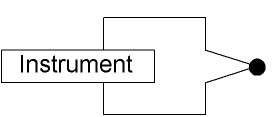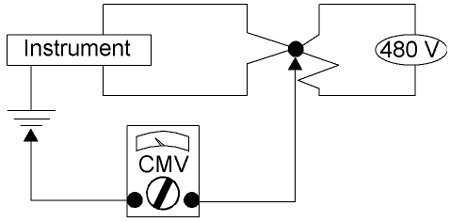How to Make Safe and Accurate Thermocouple Measurements Using Isolated Instrumentation

Thermocouples are the most widely used devices for temperature measurements. They are:
- Rugged;
- Inexpensive;
- Simply constructed (welded wires composed of dissimilar metals);
- Used to measure temperature ranges spanning thousands of degrees;
- Fast in their response to changes in temperature.
But these attractive characteristics do not come without a price. Thermocouples also:
- Produce a low-level output as a function of temperature, usually measured in millivolts;
- Are nonlinear devices;
- Require that temperature be independently sensed at the point where the thermocouple connects to the instrument. This is called the "junction" temperature, and the quantity must be algebraically combined as part of the linearizing operation as a prerequisite for accurate temperature measurements. This process is called "cold junction compensation", or simply CJC;
- Are often used in ways that require special attention because of their rugged design.
The above list of Thermocouple advantages and disadvantages makes them simultaneously easy to use, but difficult to implement from an instrumentation perspective. As a user, or prospective user of thermocouples, you can be assured that any instrument designed for use with these devices has resolved many of these difficulties. Specifically, any such instrument will:
- Provide adequate gain to handle the thermocouple's low-level, millivolt output;
- Provide linearization so the output changes proportionally with temperature;
- Provide a mechanism to compensate for junction temperature to yield accurate results.
However, you cannot be assured that the instrument has accurately predicted how you will use the thermocouple. And the thermocouple's rugged design allows it to be used in a variety of ways that would destroy other types of temperature sensors. As such an awareness of the three ways thermocouples can be used, and the demands placed on the instrument by each, is crucial for accurate and safe thermocouple measurements. Miscalculate here and your measurements will be noisy in the best case. In the worst case you could incinerate your thermocouple and your measuring instrument, and needlessly expose personnel to injury. The following details the three different ways thermocouples are applied in everyday situations: Isolated; Grounded; and Hot. Each is described in terms of demands placed on the connected instrument's isolation. Note that DATAQ Instruments' model DI-1000TC thermocouple measurement instrument offers two-way isolation (input-to-output and channel-to-channel) that allows it to provide accurate and safe thermocouple measurements in all three application configurations.
Isolated Thermocouple Configuration
Thermocouple is not directly connected to any conductive metal or liquid, and there is no risk of such a connection. It is freestanding in open, non-conductive air. An example is ambient temperature measurements.
Schematic Representation:

| Multi-Channel Application? | Results using non-isolated instrumentation | Isolation Requirements | Results Using DI-1000TC |
| No | Measurements can be made without incident. | None | Measurements can be made without incident. |
| Yes | Measurements can be made without incident. | None | Measurements can be made without incident. |
Grounded Thermocouple Configuration
Thermocouple is in direct contact with a conductive liquid or metal. As such, a common mode voltage (CMV) exists between the instrument and the thermocouple. Examples include instances where a thermocouple is welded to boiler plating or some other metal structure to increase thermal response.
Schematic Representation:

| Multi-Channel Application? | Results using non-isolated instrumentation | Isolation Requirements | Results Using DI-1000TC |
| No | Assuming CMV is below the threshold of damage:
|
Input to Output | Measurements can be made without incident. |
| Yes | Assuming CMV is below the threshold of damage:
|
Input to OutputChannel-to-Channel | Measurements can be made without incident. |
Hot Thermocouple Configuration
Thermocouple is in direct electrical contact with a power source. Examples include instances where a thermocouple is welded to, or comes into accidental contact with an electrical heating element.
Schematic Representation:

| Multi-Channel Application? | Results using non-isolated instrumentation | Isolation Requirements | Results Using DI-1000TC |
| No | Thermocouple is destroyed, instrument is destroyed, or both. | Input to Output | Measurements can be made without incident. |
| Yes | Thermocouple is destroyed, instrument is destroyed, or both. Damage most likely propagates to adjacent channels causing similar destruction. | Input to OutputChannel-to-Channel | Measurements can be made without incident. |
Additional Reading:
Ambient Temp Affects Thermocouple Measurement Accuracy
Maximum Thermocouple Wire Length


 View Cart
View Cart sales@dataq.com
sales@dataq.com 330-668-1444
330-668-1444